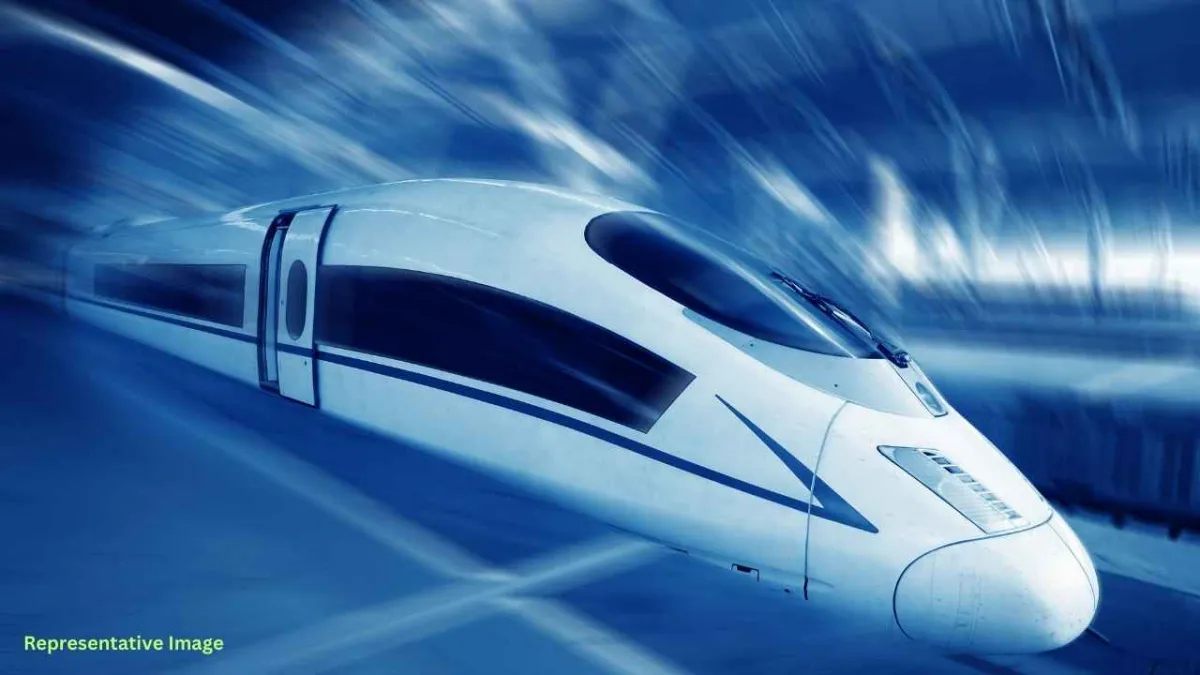India’s first bullet train will be inaugurated in August 2027 and will initially run on a 100-kilometer section between Surat and Vapi in Gujarat.
Previously, it was stated that the bullet train would run on a 50-kilometer section between Surat and Bilimora in the initial phase.
The country’s first 508-kilometer long high-speed rail corridor is being built between Sabarmati (Ahmedabad) and Mumbai. The bullet train will run at a speed of 320 kilometers per hour and complete the journey in two hours and 17 minutes.
“The bullet train will be inaugurated in August 2027 and will initially run on a 100-kilometer section between Surat and Vapi. Previously, there was a plan to open a 50-kilometer section between Surat and Bilimora within the same timeframe.”
“The bullet train will cover the distance between Mumbai and Ahmedabad in one hour and 58 minutes with stops at four stations. However, if it stops at all 12 stations, the entire journey will take two hours and 17 minutes.”
Regarding the recent visit to Surat station, it was mentioned that the Prime Minister was satisfied with the pace of construction.
“The Prime Minister said that what we have learned from this project should be used not only in railways and other high-speed projects, but also in various other sectors. We have carried out one innovation after another in this project.”
“This is a complex project and the biggest challenge is its design.” It was emphasized that the entire project will be operational by the end of 2029.
Although the Railway Ministry has awarded a contract to a joint venture led by Siemens for installing the signaling system on the corridor, industry experts say this system may not be suitable for Japanese Shinkansen bullet trains.
The ministry has also asked ‘India Earth Movers Limited’ to indigenously develop a high-speed train capable of running at 250 kilometers per hour.
Surat
Surat is a historic port city in the Indian state of Gujarat, renowned as a major trading hub during the Mughal era, particularly for textiles and diamonds. Often called the “Gate to Mecca,” it was a primary departure point for pilgrim ships to the Arabian Peninsula. While its commercial prominence declined with the rise of British-controlled Mumbai, it remains a vital economic center for diamond cutting and polishing today.
Vapi
Vapi is an industrial city located in the Valsad district of Gujarat, India. Historically, it was a small town that grew significantly after the 1960s with the establishment of the Gujarat Industrial Development Corporation (GIDC), transforming it into a major chemical and industrial hub. It is often referred to as the “Chemical Capital of India” due to its dense concentration of chemical manufacturing plants.
Gujarat
Gujarat is a state in western India with a rich history dating back to the ancient Indus Valley Civilization, home to one of the world’s first ports at Lothal. It has been a historical center for trade and commerce and is renowned as the birthplace of Mahatma Gandhi. The state’s cultural heritage is reflected in its vibrant festivals, unique handicrafts, and significant architectural sites like the stepwells of Rani ki Vav and the Sun Temple at Modhera.
Bilimora
Bilimora is a city located in the Navsari district of Gujarat, India, situated on the banks of the Ambika River. Historically, it was part of the Baroda State during the British Raj and was known for its shipbuilding and timber industry. Today, it is an industrial and agricultural hub, particularly recognized for its production of mangoes and wood products.
Sabarmati
The Sabarmati Ashram, located on the banks of the Sabarmati River in Ahmedabad, India, was the residence of Mahatma Gandhi for over a decade. It served as a pivotal center for the Indian independence movement, most famously as the starting point for the 1930 Salt March, a major non-violent protest against British rule. Today, the ashram operates as a museum dedicated to Gandhi’s life and principles.
Ahmedabad
Ahmedabad is a historic city in western India, founded in the 15th century by Sultan Ahmed Shah on the banks of the Sabarmati River. It is renowned for its rich heritage of Indo-Islamic architecture and intricate stepwells, and it served as a pivotal center for India’s textile industry. In recognition of this legacy, its historic walled city was designated a UNESCO World Heritage Site.
Mumbai
Mumbai is a major port city on India’s west coast, historically known as Bombay. It was originally a collection of fishing villages before being developed by the British East India Company and later becoming the capital of the Bombay Presidency. Today, it is India’s financial, commercial, and entertainment capital, home to the Bollywood film industry and iconic landmarks like the Gateway of India.
Japanese Shinkansen
The Shinkansen, also known as the “bullet train,” is Japan’s iconic high-speed railway network that began operation in 1964, just before the Tokyo Olympics. It was the world’s first high-speed rail system and was developed to connect major cities across Japan with unprecedented speed, efficiency, and punctuality. The Shinkansen has since become a global symbol of Japanese technological innovation and modern transportation.






